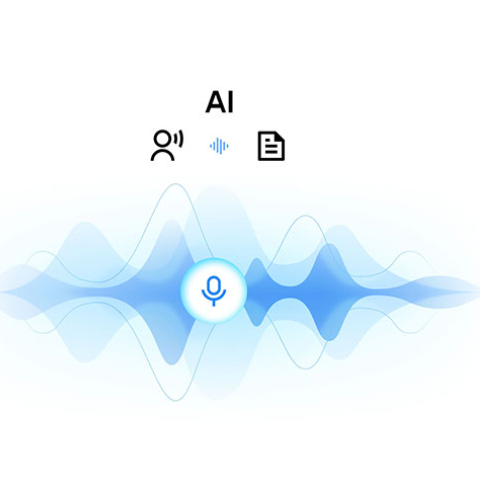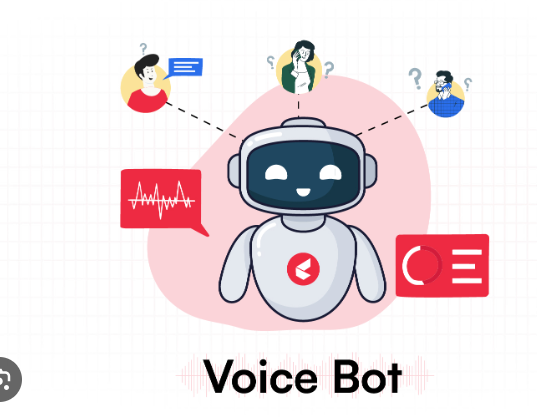
Speech Recognition and Voice Synthesis: Transforming Human-Computer Interaction 2024
http://Speech Recognition and Voice Synthesis: Transforming Human-Computer Interaction 2024
The rapid development of artificial intelligence has significantly enhanced the field of human-computer interaction. Speech recognition and voice synthesis technologies play a pivotal role in bridging the communication gap between humans and machines. This blog will provide a comprehensive overview of these technologies, focusing on Automatic Speech Recognition (ASR), Text-to-Speech (TTS), and voice assistants, with real-world examples such as Siri, Cortana, and Google Speech-to-Text.
1. Introduction to Speech Recognition and Voice Synthesis

Speech recognition (ASR) and voice synthesis (TTS) are key components of modern AI-driven communication systems. ASR involves converting spoken language into text, enabling machines to “listen” and understand human speech. On the other hand, TTS transforms text input into audible speech, allowing machines to “speak” to users.
These technologies are widely used in applications such as virtual assistants, accessibility tools, language learning, and automated customer service.
2. Automatic Speech Recognition (ASR)

2.1 How ASR Works
ASR systems analyze and interpret human speech by following a sequence of complex processes:
- Audio Signal Processing: The speech input is captured and processed as an audio signal.
- Feature Extraction: Key features, such as frequency and energy levels, are extracted from the audio to create a feature vector.
- Acoustic Modeling: Models the relationship between the audio signal’s features and phonetic units (phonemes).
- Language Modeling: Provides context by predicting the sequence of words based on probabilities.
- Decoding: Combines acoustic and language models to output text that matches the spoken input.
HTML Example for Feature Extraction:
htmlCopy code<!DOCTYPE html>
<html>
<head>
<title>Feature Extraction Example</title>
</head>
<body>
<h3>Python Code for Extracting Audio Features</h3>
<pre><code>
import librosa
import numpy as np
# Load audio file
y, sr = librosa.load('audio_sample.wav')
# Extract MFCC features
mfccs = librosa.feature.mfcc(y=y, sr=sr, n_mfcc=13)
print(mfccs)
</code></pre>
</body>
</html>
Advanced ASR Technologies
- Deep Neural Networks (DNNs): Used for feature extraction and classification. DNNs, especially convolutional neural networks (CNNs), handle complex speech patterns.
- Recurrent Neural Networks (RNNs) and Long Short-Term Memory (LSTM): Ideal for sequence data as they retain information over longer sequences, improving recognition in continuous speech.
- Transformer-Based Models: Transformers, such as those used in OpenAI’s Whisper and Google’s ASR engines, leverage self-attention mechanisms to handle large-scale speech data efficiently.
Real-World Example: Google Speech-to-Text employs a combination of RNNs and transformers for large-scale and multilingual ASR.
2.2 Key ASR Technologies and Algorithms
- Hidden Markov Models (HMMs): Traditional approach, which uses statistical methods to model the sequence of speech units.
- Deep Learning-Based Models: Modern ASR systems leverage deep neural networks (DNNs), recurrent neural networks (RNNs), and transformers for improved accuracy and natural language understanding.
Key Example: Google Speech-to-Text uses advanced deep learning algorithms, including transformer-based architectures, to achieve high transcription accuracy.
3. Text-to-Speech (TTS)

3.1 How TTS Works
TTS systems convert written text into spoken language using these main processes:
- Text Analysis: Identifies the structure and pronunciation of the text.
- Phoneme Mapping: Converts text into a phoneme sequence.
- Prosody Generation: Adds intonation and stress to make speech sound natural.
- Speech Synthesis: Produces the final audio output using speech waveform generation techniques.
HTML Example for Basic TTS Implementation:
htmlCopy code<!DOCTYPE html>
<html>
<head>
<title>Text-to-Speech Example</title>
</head>
<body>
<h3>Python Code for TTS Using pyttsx3</h3>
<pre><code>
import pyttsx3
# Initialize the TTS engine
engine = pyttsx3.init()
# Set properties before adding anything to speak
engine.setProperty('rate', 150)
engine.setProperty('volume', 0.9)
# Speak the text
engine.say("Hello, this is an example of text-to-speech synthesis.")
engine.runAndWait()
</code></pre>
</body>
</html>
Advanced Neural TTS Technologies
- WaveNet: Developed by DeepMind, WaveNet models raw audio waveforms and generates speech that closely resembles human speech by capturing nuances like accents and inflections.
- Tacotron 2: Combines a sequence-to-sequence model with attention mechanisms for producing high-quality, natural-sounding speech.
- FastSpeech: An extension of Tacotron that improves inference speed and consistency, making real-time synthesis more efficient.
Key Example: Amazon Polly and Google TTS API use advanced machine learning models to provide scalable and customizable voice synthesis services.
3.2 Key TTS Technologies
- Concatenative Synthesis: Uses pre-recorded speech units concatenated to form complete sentences.
- Parametric Synthesis: Generates speech using models that control speech parameters like pitch and speed.
- Neural TTS: Utilizes deep learning models, such as WaveNet and Tacotron, to produce human-like speech with high fidelity.
Key Example: Amazon Polly and Google’s Text-to-Speech API employ neural TTS to offer natural-sounding voice synthesis.
4. Voice Assistants: The Integration of ASR and TTS

Voice assistants like Siri, Cortana, and Google Assistant exemplify the seamless integration of ASR and TTS. These assistants can:
- Listen and understand user queries (ASR).
- Generate and vocalize responses (TTS).
- Process natural language using AI-driven natural language processing (NLP) models.
4.1 Components of Voice Assistants
- Wake Word Detection: Identifies activation phrases (e.g., “Hey Siri”).
- Speech Recognition Engine: Translates spoken queries into text.
- NLP Module: Analyzes and processes the text for intent.
- Response Generation: Determines the response using programmed logic or AI.
- Voice Synthesis: Converts the response text into spoken output.
Advanced Applications of Speech Recognition and Voice Synthesis
Assistive Robotics: Voice synthesis enables robots to provide instructions or respond in social interactions.
Accessibility Tools: Voice-driven applications improve accessibility for visually impaired users.
Transcription Services: Automated transcriptions for meetings, lectures, and content creation.
Language Learning: Interactive learning platforms that utilize TTS for pronunciation and ASR for speech practice feedback.
5. Real-World Applications and Use Cases
- Accessibility: Speech recognition enables hands-free operation for individuals with disabilities.
- Customer Service: Virtual agents can handle queries using ASR and TTS for better customer interactions.
- Language Learning: Voice synthesis provides language learners with pronunciation feedback and listening practice.
HTML Example for Combining ASR and TTS:
htmlCopy code<!DOCTYPE html>
<html>
<head>
<title>Speech Recognition and TTS Example</title>
</head>
<body>
<h3>Python Code for Integrating ASR and TTS</h3>
<pre><code>
import speech_recognition as sr
import pyttsx3
# Initialize recognizer and TTS engine
recognizer = sr.Recognizer()
tts_engine = pyttsx3.init()
# Capture speech from microphone
with sr.Microphone() as source:
print("Say something...")
audio = recognizer.listen(source)
try:
# Recognize speech using Google's ASR
text = recognizer.recognize_google(audio)
print(f"You said: {text}")
# Respond with TTS
tts_engine.say(f"You said {text}")
tts_engine.runAndWait()
except sr.UnknownValueError:
print("Sorry, I could not understand the audio.")
except sr.RequestError:
print("Could not request results; check your internet connection.")
</code></pre>
</body>
</html>
6. Future Trends in Speech Recognition and Voice Synthesis
The future holds promising advancements in ASR and TTS, with trends such as:
Multilingual Recognition: Enhancements in language models to support multiple languages with fewer data samples.
Emotion Detection and Synthesis: Integrating emotional responses in voice synthesis for empathetic and relatable interactions.
Edge AI Implementation: Deploying ASR and TTS on local devices for faster processing and increased user privacy
7. Challenges and Considerations
7.1 Technical Challenges
- Background Noise: ASR systems can struggle with understanding speech in noisy environments.
- Accents and Dialects: Variations in speech can impact the performance of ASR systems.
- Latency: Real-time processing demands low latency for seamless interactions.
7.2 Ethical Considerations
- Privacy Concerns: Voice data is sensitive and requires robust data handling practices to maintain user confidentiality.
- Deepfake Audio: Voice synthesis technology can be misused for creating convincing fake audio, posing ethical dilemmas.
- Noise and Accents: ASR systems often struggle with background noise and diverse accents.
- Data Privacy: Voice data handling requires stringent privacy measures.
- Realism in TTS: Synthesized voices can still lack the expressiveness of human speech.
8. Conclusion
Speech recognition and voice synthesis are fundamental to improving the way we interact with technology. By understanding the core concepts and leveraging cutting-edge technologies, developers can create more responsive, intelligent, and accessible solutions.
These advancements are not only transforming personal and professional interactions but also paving the way for future innovations in AI communication.
The fusion of Automatic Speech Recognition and Text-to-Speech technologies is propelling advancements in AI-driven communication, reshaping how humans interact with machines. By leveraging powerful deep learning models and continuous innovation, speech recognition and voice synthesis are becoming more accurate, natural, and accessible. As these technologies advance, they promise not only to enhance user experience but also to drive significant progress across various domains, from healthcare to education and beyond.
This in-depth look into ASR and TTS highlights their technological roots, applications, and the future of interactive AI systems. With the right balance of technical development and ethical safeguards, speech technologies will continue to evolve as cornerstones of modern communication